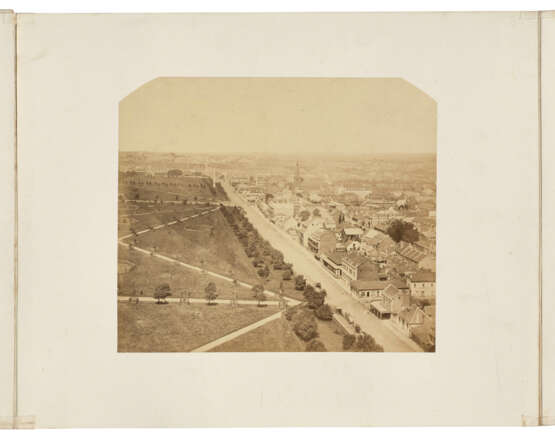ID 1105684
Lot 44 | BRUHN, Dr. George Hermann (1810-1899)
Valeur estimée
£ 8 000 – 12 000
Three watercolour views of the Clarence River, New South Wales, Australia [c. late 1860s].
Rocky Mouth a few years ago – Corrobora [sic] of Aboriginals. Signed lower left. Pen, ink and watercolour on paper (251 x 326mm). With manuscript explanatory text (detached), giving the location as Woodford Island at the confluence of the ‘Right Arm’ and the ‘South Arm’ of the Clarence River. The text also gives several geographical and geological notes, as well as the fauna that might be found in the area. (very short 15mm marginal tear).
Clarence Heads. Pen, ink and watercolour on paper (220 x 328mm). With manuscript explanatory text (attached to right-hand side), detailing the bar across the river and the red beacon pole to warn of a reef of rocks. The watercolour shows the inn on the headland (short 35mm marginal tear at bottom just into image, a couple of marginal nicks along top edge and right-hand edge, 20mm tear to right-hand edge extending into image with old tape repair to verso but without loss).
[Inspection tour by the Viceroy on board the steamer Agnes Irvine.] Signed lower right. Pen, ink and watercolour on paper, mounted on card (260 x 330mm). Showing the village of Maclean on the Clarence River, with three sail-rigged vessels and one steamer, the latter and two of the other vessels with fully-flagged dress lines. The watercolour purports to depict the vice-regal cortege for the Governor of New South Wales, the Earl of Belmore, leaving Maclean on their way to visit Grafton. This would place the dating to around July/August 1869 (some insignificant spotting mainly confined to upper margin).
Dr Bruhn was born in Germany and emigrated to Australia with his wife and four children in 1847. Initially settling in Adelaide, S.A., he moved firstly to Victoria, and in then in about 1856 to Cundletown, N.S.W., where he was the town’s first resident physician and surgeon. Bruhn was also something of a geologist, and had sparked the Victorian Gold Rushes of the 1850s with his discovery of gold at Clunes, Victoria, in 1851.
Bruhn does not seem to have stayed long in Cundletown, moving north to Maclean on the Clarence River. This is where all three of the watercolours in this lot were executed. Although not a professional artist, and rather naïve in aesthetic, these watercolours do indicate Bruhn was anxious to record events and had an eye for detail.
Provenance: Somerset Richard Lowry-Corry, 4th Earl Belmore (1835-1913, Governor of New South Wales 1868-1872, no physical evidence of provenance; thence by descent).
| Adresse de l'enchère |
CHRISTIE'S 8 King Street, St. James's SW1Y 6QT London Royaume-Uni | ||||
|---|---|---|---|---|---|
| Aperçu |
| ||||
| Téléphone | +44 (0)20 7839 9060 | ||||
| Commission | see on Website | ||||
| Conditions d'utilisation | Conditions d'utilisation |












